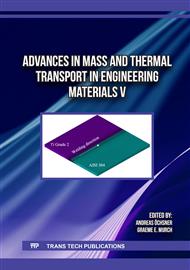p.93
p.105
p.115
p.127
p.139
p.147
p.157
p.165
p.179
A Study of Diffusion Coefficients: Database and New Device
Abstract:
The aim of the TULIP (Target ion soUrce for short-Lived Isotope Production) device is dedicated to the production of short-lived neutron deficient ions using ISOL (Isotope Separator On Line) method. The efficiency of such device depends on several parameters: diffusion, effusion and ionization processes, which must be optimized to maximize the efficiency. As short-lived, the elements must release from the stopping material in a short time, explaining our focus on the diffusion parameters and our effort to build a database gathering diffusion parameters concerning a large variety of target-element combinations. For this purpose, an important bibliographical work is underway in order to collect as much data as possible. An another offshoot of the TULIP ISOL project is to build a system (MELODICA device, MEsure en Ligne de cOefficients de DIffusion et de temps de Collage Atomique) to systematically measure the diffusion coefficients of atoms out of materials at high temperatures. Moreover, to get rid of constraints related to the use of radioactive elements, the MELODICA device uses stable atoms and embed a FEBIAD (Forced Electron Beam Induced Arc Discharge) source to ionize a large panel of elements. With this device, it will be possible to systematically extract several diffusion coefficients during the same experimental period, and to compare the relative release of different atoms out of materials currently used in the ISOL systems.
Info:
Periodical:
Pages:
139-145
Citation:
Online since:
February 2025
Authors:
Keywords:
Price:
Сopyright:
© 2025 Trans Tech Publications Ltd. All Rights Reserved
Share:
Citation:


